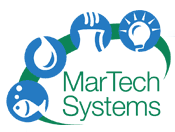Audits & Optimization
Allowing utility managers to reduce the risk of failure and minimize operating costs
- Are your operators properly monitoring your water-based utility systems to maximize efficiency and minimize risk of failure?
- Or are you waiting for a system failure to measure the current system reliability?
- How does your incumbent water treatment supplier compare to industry standards?
Many utility managers assume the presence of a national or global water treatment service company is sufficient to ensure receipt of high quality services at a fair cost. Recent ownership changes of several of the largest water treatment companies may have promised improved profitability for shareholders but don’t necessarily improve the value to the you, the customer.
We audit water-based utility systems such as influent, pretreatment, boiler, cooling and wastewater facilities for a variety of reasons, including:
- System reliability – download PDF case history
- Operator competence
- Conformance of chemical treatment and monitoring program to industry standards
- Energy efficiency
- Water conservation
- Water reuse
- Water treatment supplier competence
We rank our recommendations based on risk and return on investment, allowing our audit report to form the foundation for prioritizing corrective actions by the operations staff. We have recently completed comprehensive audits of three refineries for a client, including the flagship refinery. – download PDF case history
>> Find out what our clients say!
We have also completed water conservation and reuse audits for several sites for a Fortune 100 pharmaceutical company and electric power headquarters. – download pdf case history
Troubleshooting utility system operating inefficiencies and implementing corrective action
Most operating facilities have specification limits for water quality and chemical concentrations that define normal operating conditions. Consistent lack of conformance to the critical specification limits can lead to corrosion, deposition, fouling and subsequent system failure in a surprisingly short period of time. We recommend tracking key operating indices and key performance indices to identify non-conformances, initiate troubleshooting activities, identify the root causes and implement corrective actions. We can assist with these tasks and coach operations personnel to improve their troubleshooting skills.
Examples of troubleshooting
- Cracked inlet lateral in strong acid cation demineralizer caused poor distribution of flow and short runs
- Improper dosage and insufficient reaction time for coagulant resulted in poor quality clarified water, short service cycle for downstream filters and excessively high filter backwash frequency.
- High rates of carbon steel corrosion due to insufficient anodic corrosion protection caused by low ortho-phosphate concentrations
